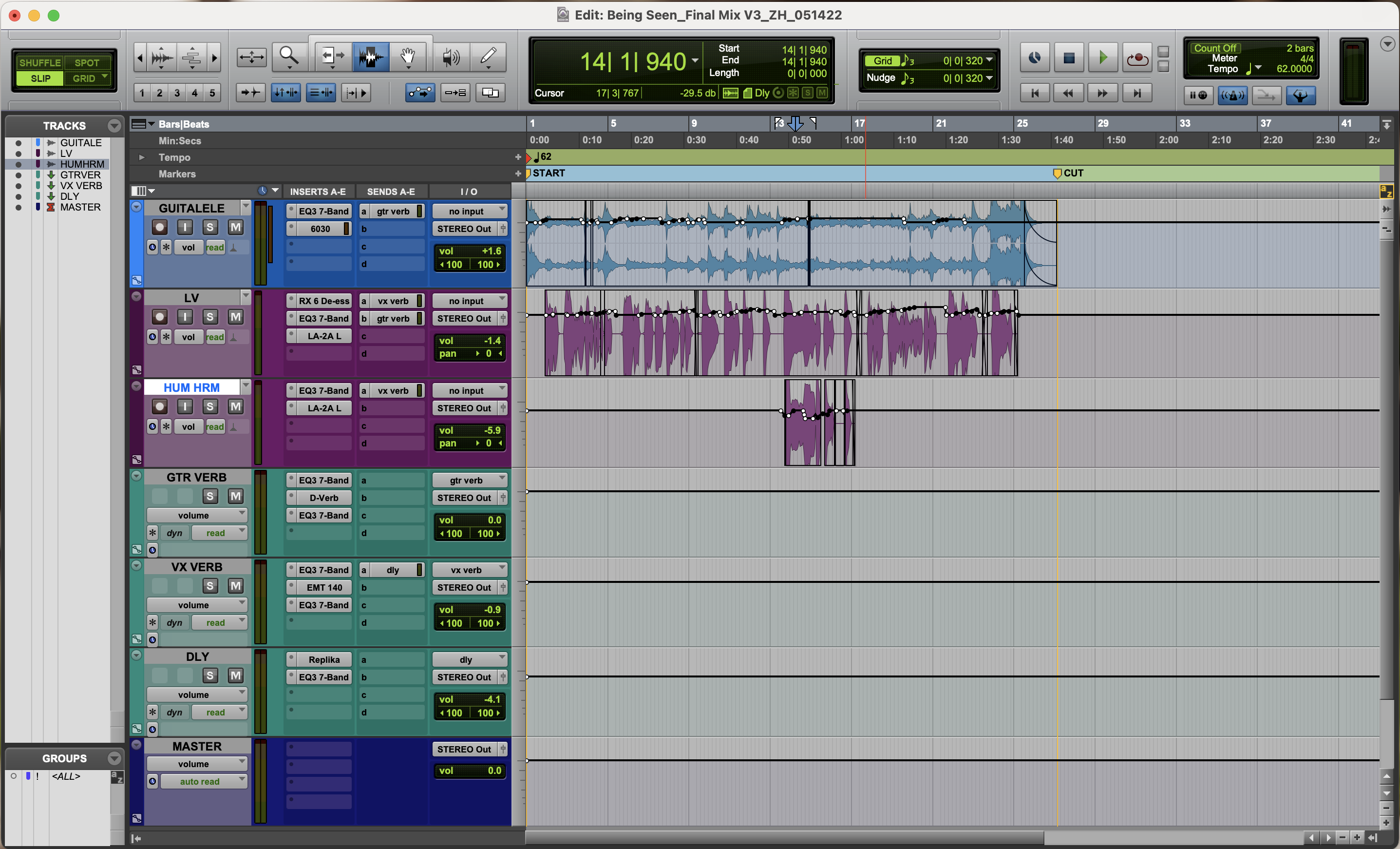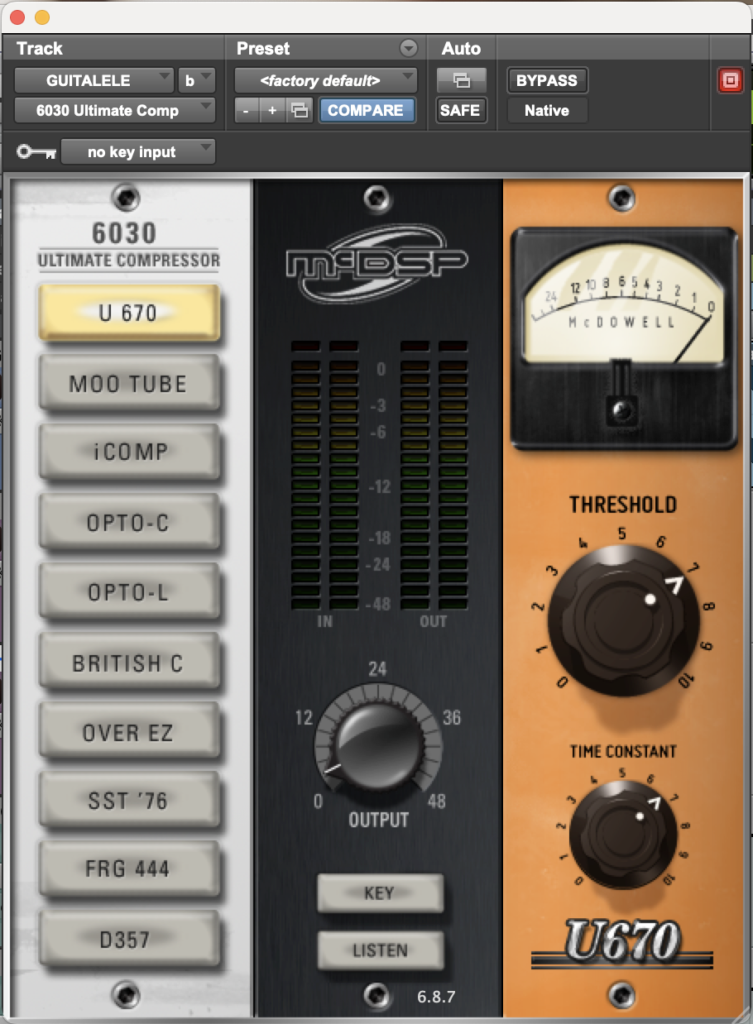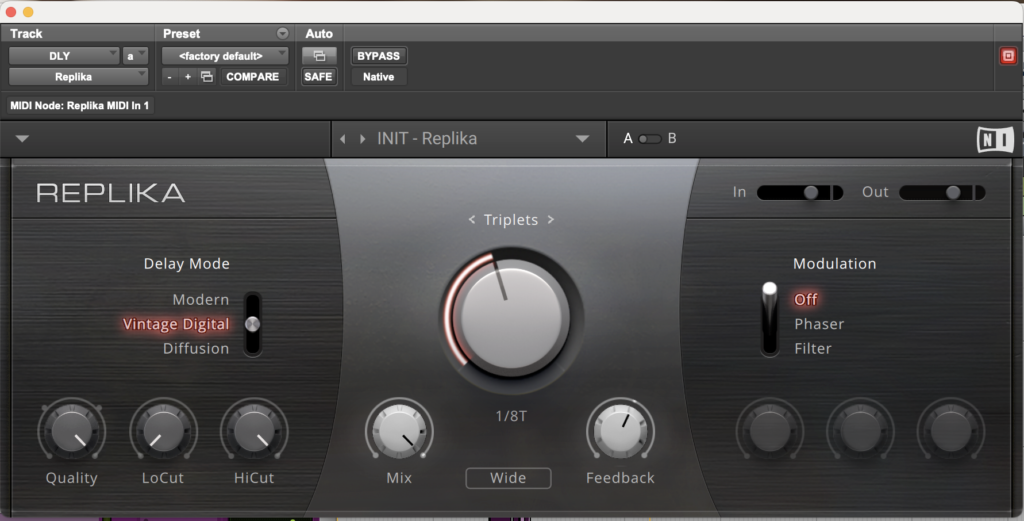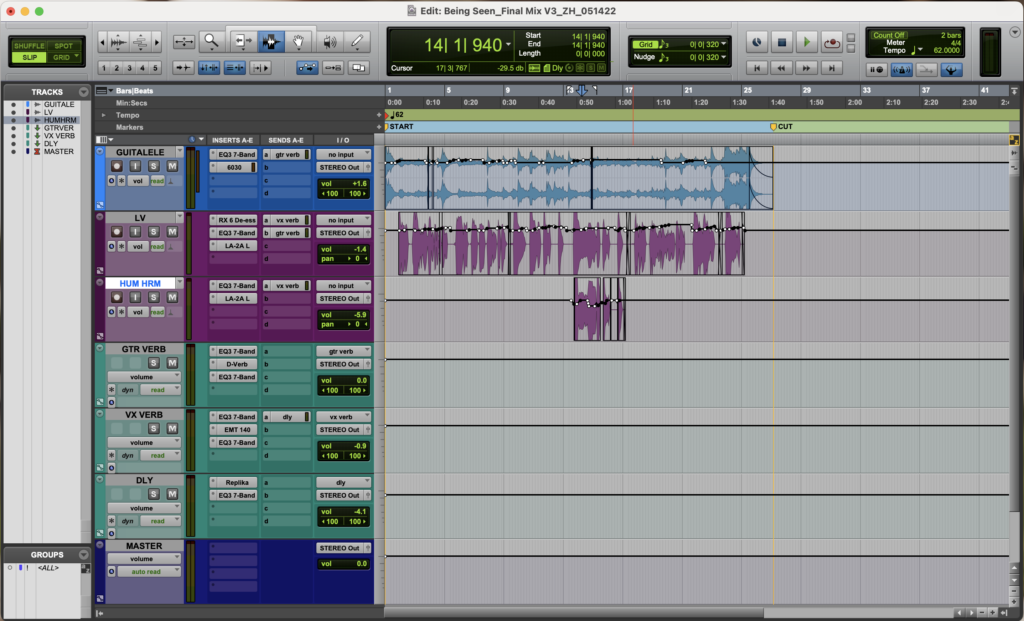Recently, I mixed the song “Being Seen” by Ariyel after the song received many views on TikTok. The tracks consisted of guitalele (hybrid of acoustic guitar and ukulele), lead vocal, and a supportive humming vocal. I want to walk through my process for this mix even though it was fairly straightforward and the artist was really aiming to highlight her raw and vulnerable performance. I really enjoy listening to soft acoustic songs to balance the loads of electronic-based songs I listen to regularly, and I believe it’s important to take good care of the mix no matter how simplified.
If you’re a Bake Off fan, you might recognize that whenever a contestant decides to do a “basic” loaf of sourdough bread for example, Paul Hollywood warns the contestant that everything must be perfect because there is less to judge. I think of acoustic mixes like this since there is less going on when stacked up against songs in a playlist with fuller arrangements. Since the guitalele and vocals were recorded in a home studio, I started my basic sourdough recipe with iZotope RX 9 to de-click and de-noise the tracks as much as possible without creating artifacts.
Since only two instruments are commanding the whole frequency spectrum of this song, I found it most effective to EQ the guitalele and lead vocal track at the same time, moving through one frequency band at a time. This process kept me from overloading certain frequency bands with both instruments. For example, I really liked the warmth of Ariyel’s lower register, so I had her voice fill up more of the mid-low frequencies and reduced the guitalele in that area. I also included compression plug-ins on the lead vocal and guitalele tracks, but I kept the settings subtle for overall smoothing without too much audible effect. I like using McDSP’s 6030 Ultimate Compressor for this style of compression because the simple UI and fewer parameters prevent me from overthinking this mixing step.
For the time-based effects, I wanted to reintroduce a sense of singular space since I removed a lot of that with RX, and I also sought out a small, fleeting ear candy moment with delay. I used a default 1.2-second plate for the guitar reverb and used this sparingly, but I made sure to send a little bit of the vocal to the guitar reverb as well to blend the instruments in the background. To keep the lead vocal as the stand-out instrument, I also used a longer (nearly 4 seconds) plate reverb for the lead and supported humming. This added an ethereal aesthetic to the song and also gives the listener moments to sit in the rawness of the vocal as it rings out. For the added ear candy, in the humming section of the song, I sent the vocal reverb instead of the dry vocal to a soft triplet delay.
Because there are a lot of short moments of silence, I made sure to automate the reverb levels lower during those times to make sure those moments stayed authentic to the recording. During one of my favorite classes at Berklee, an analog mixing class, I became really diligent with level and send-level automation. Now, I automate nearly all tracks in a mix all the time, and I think it is especially effective for sparing acoustic mixes. It can sometimes be a pain (especially if you’re on a laptop using a mouse pad like me), but I believe it is very worth the extra time to take a few quick passes and smooth everything out.
Whether you’re a sourdough pro or you’re just getting started on your mixing journey, I hope my process shares some insight and inspiration for your own methods. The best part about stripped-down mixes like this is that it’s all about the performance. I feel that our role as the mixer is to support the performance as it transcends a live TikTok and enters the streaming realm.



